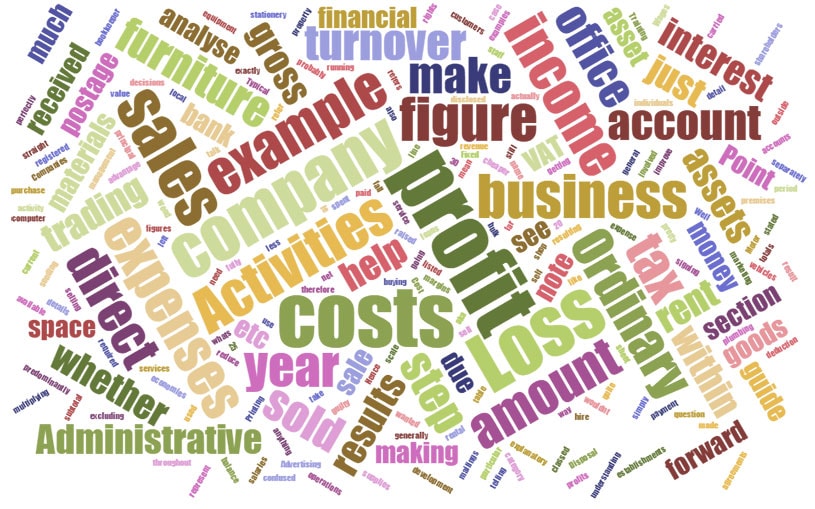Are you guilty of signing your accounts without fully understanding what they are telling you? Well be confused no longer! Our step by step guide will talk you through exactly what your figures mean, and how you can use them to help improve your results.

What is a profit and loss account?
The profit and loss account represents the trading activities of your company during the period in question. It will detail how much money you raised in sales revenue, and how much you spent in costs. The resulting figure is your profit or loss for the year.
Turnover
The turnover figure is quite simply the amount of goods or services you have sold in the year (regardless of whether you have received payment for them or not). If you are a VAT registered company then this figure will be your net sales (your sales excluding VAT).
Cost of Sales (aka Direct Costs)
Direct costs represent the costs that are directly attributable to making your sales. For example, if your company made and sold furniture, then your sales would be furniture, and your direct costs would be the materials used to make the furniture (i.e. without the wood you could not make a table, and therefore you could not make a sale).
Gross Profit
The difference between your turnover and your direct costs is what’s known as your gross profit. This figure can help you analyse what your profit margins are, and can help you make management decisions going forward. For example, if your gross profit was say 25% of your turnover, but you wanted it to be 30%, then you could analyse your direct costs to see if you could reduce them by way of getting cheaper materials, or bulk buying to take advantage of economies of scale.
Distribution Costs
This section is pretty self explanatory. Distribution costs refer to the costs directly attributable to sending out your goods to customers. Hence you probably wouldn’t see any of these costs in a service company.
*Point to note* – general postage costs for mailings, etc are NOT distribution costs, they are an administrative expense.
Administrative Expenses
Administrative expenses are the costs involved in running your business, regardless of whether it is making sales. For example, if you had a shop or an office, the rent on that premises would still need to be paid regardless of whether you have actually sold anything. Typical examples of expenses in this category are:
- Rent and other property expenses
- Printing, postage and stationery
- Advertising or marketing
- Training and staff development
- Wages and salaries
- Motor expenses
Other Operating Income
Other operating income generally refers to income received by the company that is outside of it’s principal line of business. For example if you are a business predominantly selling plumbing supplies, but you also rent out some office space to a local bookkeeper, then the rental income on that office space is classed as other operating income.
Profit or Loss on Disposal of Fixed Assets
Companies, just like individuals, can own assets (for example, office furniture, computer equipment or vehicles to name just a few). They are perfectly within their rights to sell these assets on once they are no longer required within the business. The difference between the value of that asset (as stated on the balance sheet) and the amount the asset was sold for is known as the profit or loss on the sale. Again because this activity does not fall within the “ordinary” trading activities of the business, the results of the sales have to be disclosed separately.
Operating Profit or Loss
This figure totals all income and expenses listed in the profit and loss account so far, and as a result it represents the financial results for the company for all of their trading and business operations carried out throughout the year.
Interest Receivable and Interest Payable
This section details all interest receivable and payable during the year from financial establishments. For example from your bank current account, bank loans, hire purchase agreements, etc.
Profit or Loss on Ordinary Activities Before Taxation
This figure is a straight forward sub-total of the profit or loss in the company before the deduction of corporation tax.
Tax on Ordinary Activities
This is the amount of corporation tax due on the company profits.
**Point to note ** – This is not just a case of multiplying the profit or loss on ordinary activities by 20%.
Profit or Loss on Ordinary Activities After Taxation
This is the profit before tax less the amount of tax due. It represents the amount of money left in the company that is available for distribution to the shareholders for that particular year.


